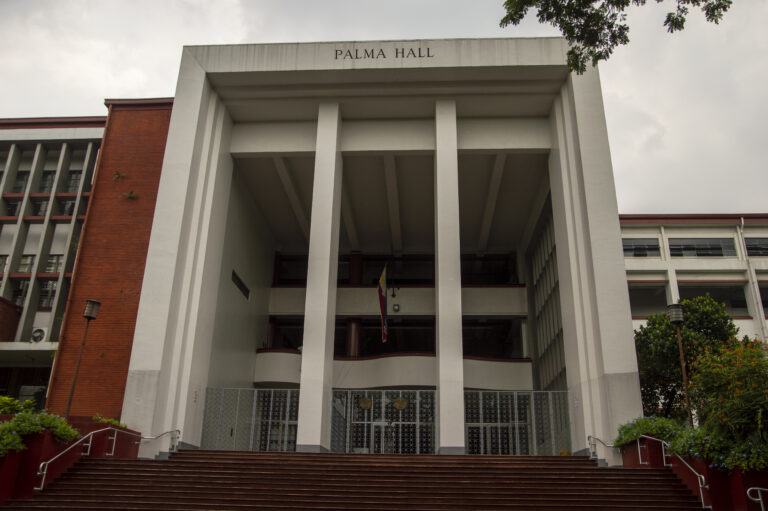
By Ron Imperial
When Pres. Ferdinand “Bongbong” Marcos, Jr. delivered his second State of the Nation Address (SONA) last July 24, he bragged about how “more and more of our universities improved on international rankings,” among other sworn accomplishments of the administration after almost a year in office.
But what does the president mean by “our universities,” and does the state of our universities really reflect the administration’s success?
Rising ranks and budget cuts anew
If Marcos wants to talk about “our” universities, an easy way is to start with the country’s titular institution – the University of the Philippines, which moved up in this year’s Quacquarelli Symonds (QS) University rankings. If Marcos is to be believed that this success can be credited to the administration taking education seriously, then it would be reasonable to expect a bigger budget for the University that actually has “the Philippines” in its name.
But as the Department of Budget and Management’s budget priorities have shown, this is not the case.
Comparing the the actual budget that agencies received this year – and the DBM’s newly released National Expenditure Program (NEP) 2024 – the DBM’s proposals for next year – the UP System would lose ₱2.97 billion, a 13.96% decrease, much bigger than the 0.53% decrease from fiscal year 2022 and this year.
Both Marcos’s first and second budget proposals – for 2023 and 2024 respectively – suggested budget cuts north of P2 billion for the UP system.
Moreover, the proposed ₱21.29 billion budget is only a little more than half of the ₱40.8 billion that the University asked for. This is ₱19.5 billion budget deficit from UP’s proposed budget.
In the NEP, there is a 20.01% ₱1.62 billion slash on maintenance and other operating expenses (MOOE). This part of the budget funds training and scholarship; utility; repair and maintenance; survey, research, exploration, and development; and financial assistance/subsidy; among others.
Notably, under MOOE, there is a 35.56% decrease or worth ₱294.45-million slash from the operational ₱828.27 million to DBM’s proposed ₱533.82 million allocation on the provision of medical assistance for indigent patients of the Philippine General Hospital (PGH) under UP Manila.
Likewise, there is even a ₱1.66 billion cut on capital outlays (CO) which fund infrastructures and equipment acquisitions. This means that numerous, numerous proposed infrastructure projects, both building constructions and renovations and rehabilitations, might be suspended should Congress make no amendments to the budget.
These include the construction of the ₱700-million College of Human Kinetics in UP Mindanao; the ₱513-million Information Technology Center and Student Affairs Building in UP Cebu; the ₱443-million Big Data Analytics, Computational and Data Center of the UP System; and renovations of several key buildings such as Benitez Hall, Gonzales Hall, and the University Health Service Building.
These cuts also come despite countless long-standing problems in the University remaining unsolved. Until now, for example, students fought tooth-and-nail for units because of a shortage of classrooms and professors.
READ: https://sinag.press/news/2022/08/22/mala-lotto-na-mito-ng-swerte-ng-crs/
If Marcos wants to find evidence that his support for education has made our universities rise in international rankings, he needs to look elsewhere.
State of Philippine universities
But where is there left to look?
Quacquarelli Symonds (QS) World University Rankings 2024, published this year, ranked five Philippine universities among the top global higher education institutions, namely, (#404) University of the Philippines, (#563) Ateneo de Manila University, (#681–690) De La Salle University, (#801–850) University of Santo Tomas, and (#1201–1400) University of San Carlos.
Another internationally renowned ranking, Times Higher Education (THE) World University Rankings (WUR) 2023, published last year, ranked four Philippine universities, namely, (#351–400) Ateneo de Manila University, (#801–1000) University of the Philippines, (#1201–1500) De La Salle University, and (#1501+) Mapúa University.
Evidently, UP is the only state university and college (SUC) or local college and university (LUC) from the Philippines ranked among the “bests.”
Many of “more and more of ‘our’ universities improved on international rankings” are privately owned. So what can the government claim to be its “ours”? And to its own, what has it done and will do?
Looking at the NEP, we can see that there are proposed cuts across the board. The Marcos administration wants to cut funding from 30 SUCs, an almost P6.2 billion slash from the previous year. CHED as a whole, meanwhile, is set for a P742.5 million budget cut.
Marcos supporters may argue that, just like last year, these proposals are still subject to change, and these universities will be given the opportunity to prove that they are worth more. So instead of looking at the NEP, let us look at the General Appropriations Act of 2023, or the actual budget that these institutions received this year.
While UP managed to stave off the initially-proposed P2.5 billion budget cut, it still received a slash of more than P128 million. The allocation was also little more than half of the University’s initially proposed ₱44.149 billion – a budget deficit of more than P20 billion.
This is the biggest in a decade-long trend of budget deficits, even before the COVID-19 pandemic and Russia-Ukraine conflict, of the country’s national university.
We can observe a similar trend in other universities.
The Polytechnic University of the Philippines (PUP), the largest Philippine university by student population, experiences a ₱168 million-budget slash.
Three SUCs suffered over 50% budget decrease. Marikina Polytechnic College has the largest budget cut worth ₱926.1 million or an 80.48% decrease. Marinduque State College follows with a 79.52% budget decrease worth ₱1.112 billion. Romblon State University’s budget decreased by 62.93% or ₱736.058 million.
In total, 51 SUCs saw their budgets slashed – this, despite the President saying that his administration is committed to strengthening the country’s education system.
Although one may quickly dismiss the budget slashes—given that 66 SUCs still receive some increase in their budgets while “only” the budgets of 51 SUCs were slashed (meaning 43.59% of SUCs receive decreased funding, which is still notable) – these budget cuts come despite continued billions of pesos going towards confidential funds and militarization.
In both this year’s GAA and next year’s NEP, the administration has shown that these intelligence and confidential funds (more than P10 billion proposed for next year ) and the defense sector (a 21.6% increase) are its real priorities, much more than education.
It is clear, then, that given chronic underfunding and relentless budget cuts, the state of our state universities is far from sound. While Marcos may brag about rising international rankings and helping out learners, the numbers tell us a whole different story.
If Marcos really wants to brag about improving our universities, he should put his money where his mouth is. Instead of stealing credit from private universities and letting public universities go unfunded, he should make sure that his budget team allocates enough funds to back up his promises to the Filipino learners.
The featured image is courtesy of Philippine Star







